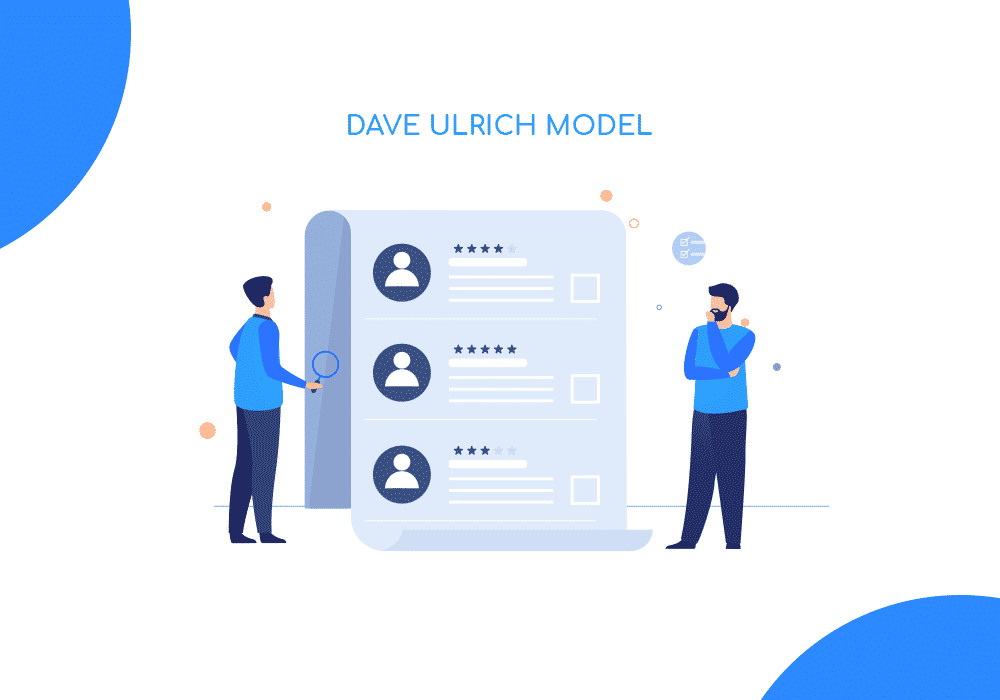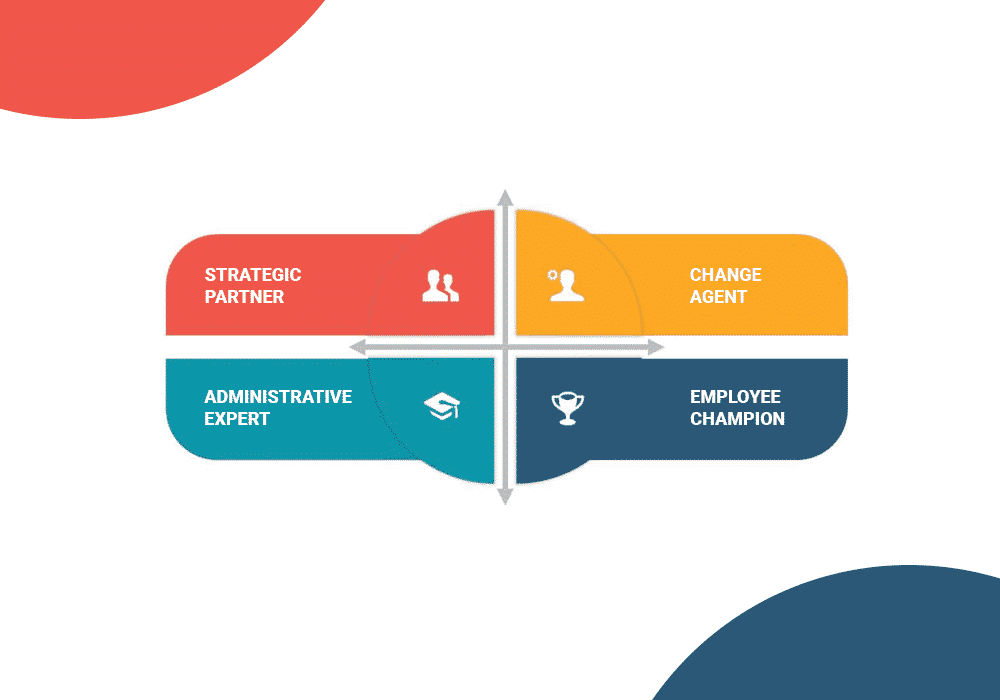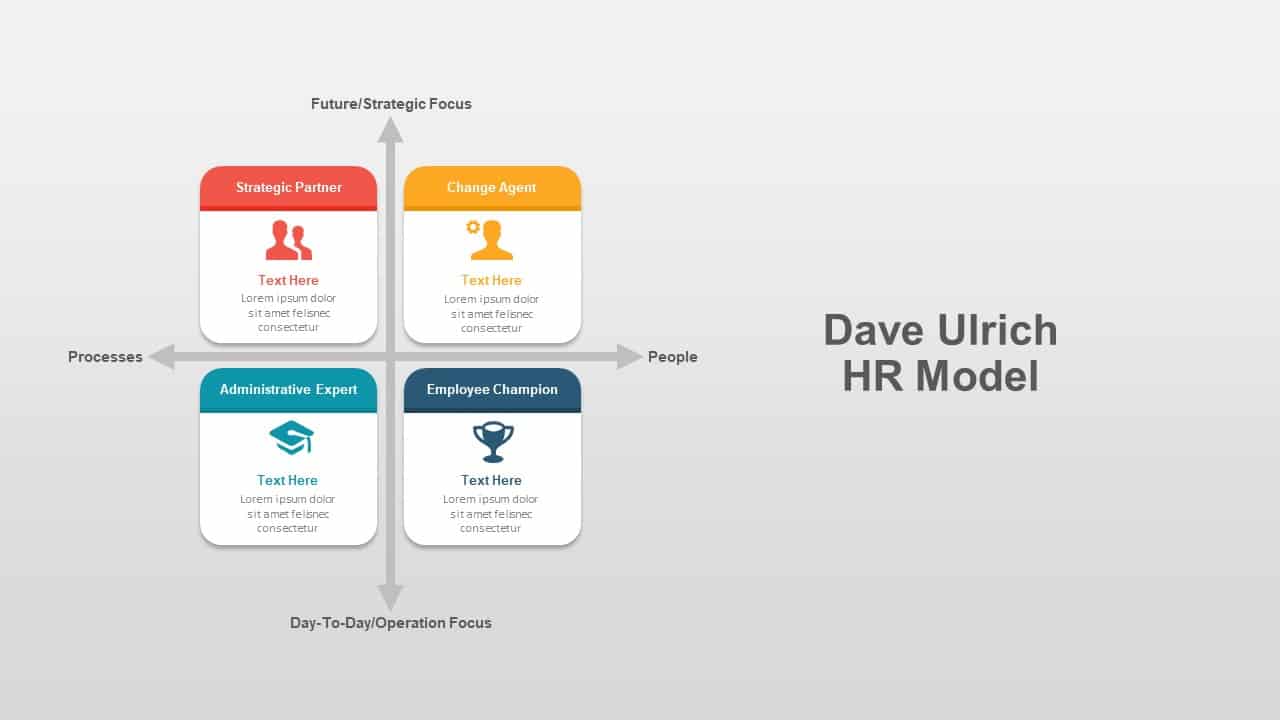Dave Ulrich model: solid yardstick for your organization

Dave Ulrich has been considered the father of modern HR management. His four model framework is well-known for management students and professionals as a workable model in HR administration. David Ulrich is a real HR Specialist, who defined the most common HR Roles model, which commonly used on the market. The model is well known for familiarizing mainly the aspects of Human Resources with the highest value-added.
The major contribution of the Dave Ulrich HR model entitled the beginning of the movement from the functional HR orientation to the more partnership organization in HR management function. The benefit was a more accountable and flexible organization of Human Resources, which permitted many HR Professionals to become real appreciated business partners. Ulrich is someone whose thought remains to influence the way we think about HR. And since Human Resources is responsible for keeping workers happy, hard-working, and dialled-in to an organization’s long-term aims and goals, Ulrich’s famed HR Model is a big part of practically any company’s present or future success.
Dave Ulrich model addresses elementary practices that teach people how to be strategic and specific while being able to deliver effectively.
This model was very revolutionary when he introduced it because it looked at people and their roles first and foremost. HR departments are vital in organizations in part because of how they focus on the people in an organization—including workers, managers, board members, stakeholders and more. Dave Ulrich model giving emphasize people roles rather than the department’s functions. David Ulrich’s HR model defined the four roles listed below as the key elements of an HR department.

Dave Ulrich HR model
Strategic partner
Strategic Partner is about the configuration of HR activities and initiatives with the global business strategy and it is the task of the HR Management and HR Business Partners. The position is tasked with communicating with “internal clients” or “internal customers”. The strategic partner is the HR point of contact for these individuals and is, therefore, the channel that most inner members of an organization will use to link with a Human Resources department. Among other things, the strategic business partner gives feedback to internal customers about the excellence of their involvement, classifies top talents within the organization, helps fill job openings, shares HR goals with employees to ensure they are executed across the organization, and helps promote overall productivity and cooperation in the workplace.
Note: strategic partner is the link between the organization and its staff members.
Change agent
Without change, no business or organization could achieve its desired goals. Change management is the only way to get the target and it may be the most discussed topic which focused on changes in life, as a part of the organization. When an organization wants to develop, expand, evolve, or otherwise alter its goals or purposes, the change agent is the Human Resources role that communicates those organizational changes inside. This person or branch systematizes and gives a structure to training opportunities so employees can learn the new skills essential for changing business goals or job roles, or changes job descriptions to reflect those transformed roles. Basically, the change agent aids adapt the organization for its next stage of growth or evolution.
Note: change agent is the teacher who helps employees adjust to change and adapt to roles and responsibilities. HR trainer is a valuable asset of an organization he teaches new skills related to the job.
Administrative expert
Administrative Expert changes over the period of time. In the beginning, it was just about ensuring the maximum possible quality of delivered services, but nowadays the pressure is put on the possibility to provide quality service at the lowest possible costs to the organization. At one end of the range, the administration expert monitors changes in legislation, regulation, work-related health and safety rules, and other types of labour or trade law and aids the organization adapt in order to stay acquiescent with those laws. On the other end of the range, the administration expert is liable for organizing personal employee information and making sure that it is up to date. This individual uses an HRIS (Human Resources Information System) to display, update, and save that information. In other words, the administration expert is the next thing to a true “document management” specialist within Ulrich’s HR Model. By using an HRIS, the administration expert is key in serving an organization adopt modern, paperless policies for keeping information, fortifying personnel files, sharing files within the organization, and more.

Note: administrative expert is a strategic organizer in charge of managing and utilizing anything and everything.
Employee champion
The employee champion is able to take care of the interest of employees and to protect them during the process of the change in the organization. The employee champion (also known as the “employee advocate”) is the role in charge of assessing employee confidence and satisfaction and using that information to generate a positive company where people will want to work. This person uses reviews to measure employee satisfaction by conducting surveys and other methods, spot shortcomings in company culture, and ensure that managers are fair and equitable to all employees. The employee champion also leads initiatives to improve optimism and employee experience, helps the change agent with offering training and professional development opportunities, and ensures that existing employees have opportunities to apply for new careers or promotions within the organization.
Note: employee champion is the person who makes sure everything runs smoothly without any disputes within the organization.
Despite the confusion on its implementation, the values surrounding the Ulrich Model remain and these are the following: To create a cohesive structure that brings value, outline a clear distinction or role for the Human Resources, makes a competitive advantage for the company, and is able to measure how a company has performed according to metrics. It’s not a perfect system like any other but it offers a solid yardstick for an organization

